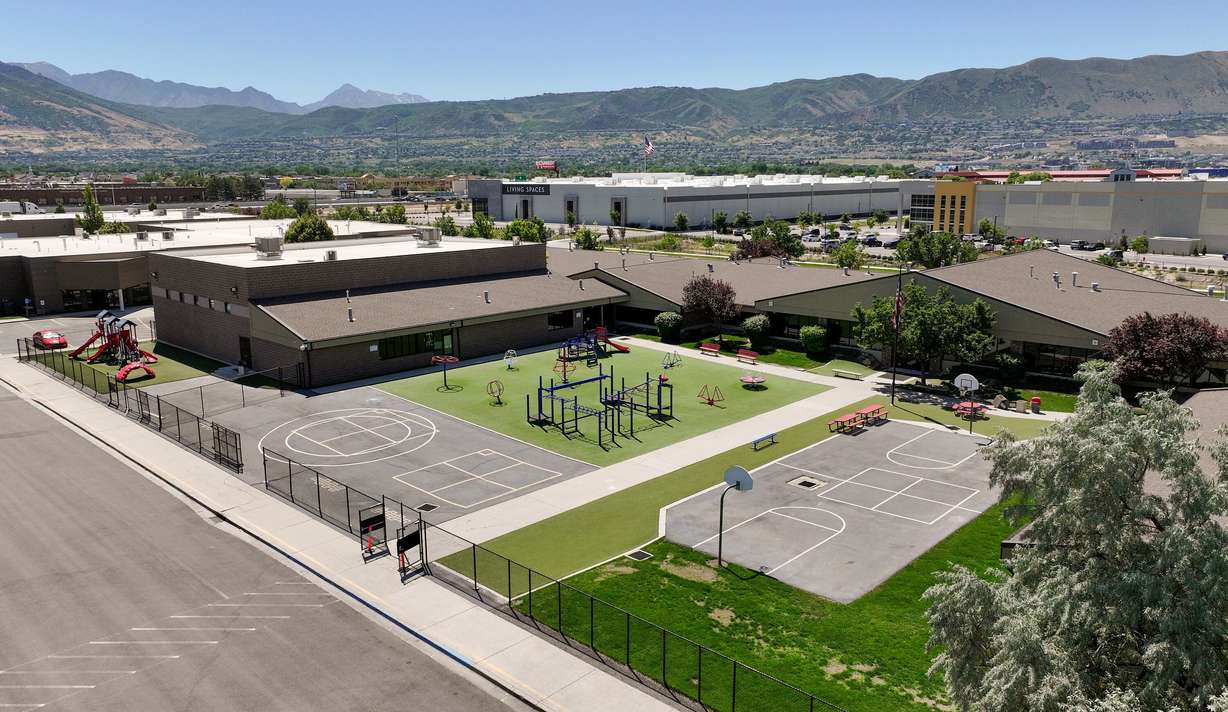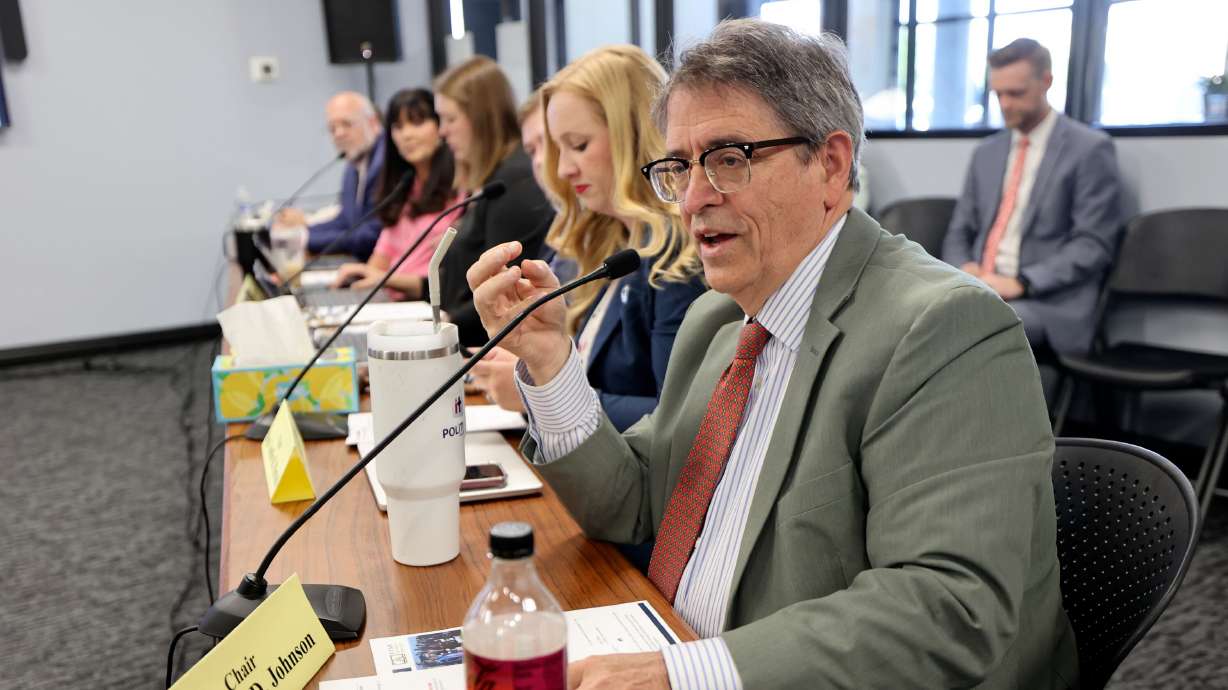- Utah lawmakers visited Draper's American Preparatory Academy to discuss charter schools' impact.
- Discussions included charter funding, oversight roles, and student performance data collection methods.
- A legislative audit urged reevaluation of intervention programs for underperforming Utah students.
DRAPER —The Legislature's Education Interim Committee took a field trip Wednesday — leaving the familiar confines of the state Capitol and setting up shop at Draper's American Preparatory Academy.
The meeting's locale — a public charter school with over 5,000 students enrolled at six different campuses — was no coincidence.
Much of the interim meeting focused on Utah's public charter schools — which educate tens of thousands of Utah's K-12 students and are primarily funded through public dollars.
Lawmakers participated in a Utah charter school overview that included presentations from both the Utah State Board of Education and the Utah State Charter School Board, along with American Preparatory Academy Superintendent Carolyn Sharette.
The committee also reviewed a recent legislative audit on student performances on statewide tests — and was formally introduced to Molly Hart, Utah's newly appointed state superintendent of public instruction.
Utah charter schools' growing reach
Wednesday's interim committee doubled as a "Utah Charter Schools: 101" for lawmakers.

Some key charter school funding points:
On the whole, Utah's charter schools are funded with taxpayer dollars, much like traditional public schools.
"Due to the configuration of charter schools versus traditional districts, students are funded at different percentages based on the grade level of the student," according to the Utah State Charter School Board website.
Additionally, a charter school may not charge tuition or require students or parents to make donations and is subject to the same rules regarding school fees as other Utah public schools.
Charter schools have their own governing boards, and most operate independently of local school districts. The Utah State Board of Education and the State Charter School Board have oversight responsibility for charter schools and annually review the progress of every charter school, according to the charter school board.
Charters, meanwhile, receive public per-student funding on the same basis as school districts — via Utah's weighted pupil unit — with slightly different weights.
Unlike Utah school districts, charters do not have bonding authority or taxing ability, so the Legislature created a formula that provides an equalized per-pupil state appropriation for each charter school.
"We think that the charter schools in Utah provide one of the best and highest quality choice options for students," said State Charter School Board member Susan Pulsipher. "Our mission is to make sure that that happens."
Paul Kremer, the charter school board's executive director, spoke of the cooperation existing between the State Charter School Board and the Utah State Board of Education.
A recently approved memorandum of understanding between the two bodies helped clarify their respective roles and responsibilities in the oversight and support of the charter school board's authorized public charter schools in Utah.
"The (memorandum) affirms our ability to serve as a distinct, capable charter authorizer that's collaborative, supportive of the schools we serve, and focused on student success," said Kremer.
Sharette concluded Wednesday's charter school presentations, highlighting the success that students at her charter school are experiencing in the classroom and beyond.

Sharette emphasized American Preparatory Academy's frequent student performance data collection processes and institutional initiative — helping to ensure high proficiency scores while gleaning millions of dollars in scholarships and facilitating high rates of college matriculation.
"We focus really hard while we're at school," said Sharette. "Students are expected to be engaged, having fun, while also being really engaged at school."
Audit: Helping low-performing students catch up
Originally presented to Utah's Legislative Audit Subcommittee last December, the extensive legislative audit deduced that the state's school districts and charter schools should reevaluate the effectiveness of their intervention programs for Utah's struggling students.
Utah students underperforming in math, language arts or science require timely interventions guided by accurate data to elevate them to proficient levels, the audit concluded.
A statewide gap exists "between the performance of students who are in a group that traditionally struggles with academic proficiency and those who aren't."

The report classified "underperforming student groups" as those who have a higher-than-typical chance of performing below proficiency "and who are economically disadvantaged, learning English, or racial or ethnic minorities."
Such groups frequently need the most growth and support.
"Looking at the net percentage proficiency change each for five years, the percent of students who changed their proficiency status remained problematically low," their report noted. "Both state and local education agency level observations create a case for school districts and charter schools to reevaluate the effectiveness of their student intervention programs."
Local education agencies such as school districts and charter schools, the report recommended, should make an effort to identify students in need "and intervene quickly at the first signs of difficulty."
High-performing districts and schools execute timely and consistent interventions based on internal student data, according to the audit report.
Such high-performing districts and charter schools gather and analyze data in a variety of ways. The auditors noted that some successful local education agencies are utilizing internal data to drive their decisions and interventions. Others are utilizing designated data analysis teams.
"Internal student data has the capability to drill down to individual students' skill sets to ensure timely, targeted interventions," the report said.
Audit supervisor Nicole Luscher added during Wednesday's presentation that high-performing schools and districts with comparatively smaller proficiency gaps offer several proven practices. "These include standards based instruction, proficiency based grading, peer learning at the administrative level and early and consistent intervention."
The audit report noted that five years of data reveals that the statewide movement between student proficiency groups "appears to balance out to stagnation."
"Some of this may be explained by recovery efforts from the COVID-19 pandemic; however, these conclusions remain true over time," according to the report. "The average net percentage proficiency changes for pre- and post-pandemic school years is below 2%."
Observations of student proficiency measures between the post-pandemic 2022-2023 school years "appear largely unchanged."









